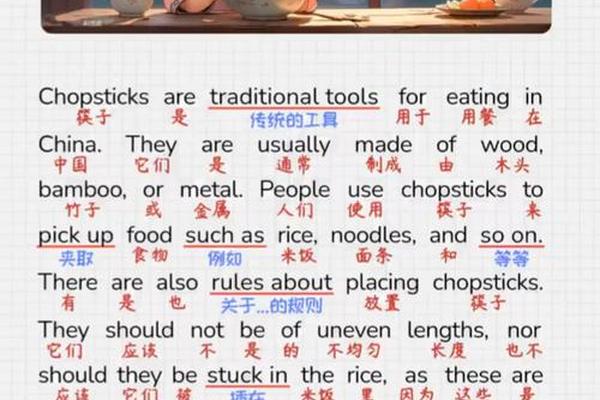Chopsticks: A Cultural Symbol of China
Chopsticks, known as "Kuai Zi" (筷子) in Chinese, are far more than mere eating utensils. They embody profound cultural values, historical evolution, and philosophical wisdom unique to Chinese civilization. Below is an exploration of their cultural significance, history, etiquette, and modern relevance.

1. Historical Origins
Chopsticks originated in ancient China over 3,000 years ago, with the earliest records dating back to the Shang Dynasty (c. 1600–1046 BCE). Archaeological evidence, such as bronze chopsticks unearthed in Yinxu (the ruins of the Shang capital), confirms their early use . Initially called "Zhu" (箸), they evolved from practical tools to refined cultural artifacts. By the Han Dynasty (202 BCE–220 CE), bamboo and wooden chopsticks became widespread, while later dynasties introduced ivory, jade, and even gold and silver versions for royalty . Legends attribute their invention to figures like Yu the Great, who used sticks to retrieve hot food during flood control efforts .
2. Cultural Symbolism
3. Craftsmanship and Global Influence
Chopsticks are crafted from materials like bamboo, wood, metal, and plastic, often decorated with intricate carvings or calligraphy, transforming them into collectible artworks . Their influence spread across Asia, including Japan, Korea, and Vietnam, adapting to local cultures while retaining their Chinese roots . Today, they symbolize cross-cultural exchange, with over 1.8 billion users worldwide .
4. Modern Significance

Conclusion
Chopsticks are a microcosm of Chinese culture, intertwining history, philosophy, and daily life. From their humble beginnings as practical tools to their status as cultural icons, they continue to inspire admiration globally. As the saying goes, "A pair of chopsticks carries the weight of five millennia of civilization" .
References:
For further reading, explore the historical details in , cultural taboos in , and modern perspectives in .


